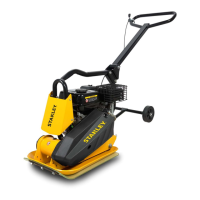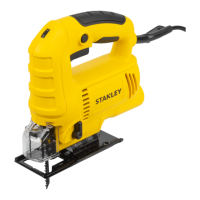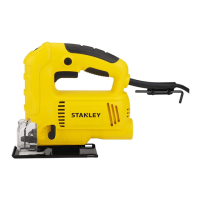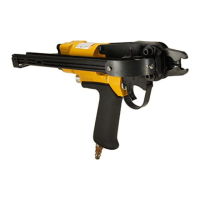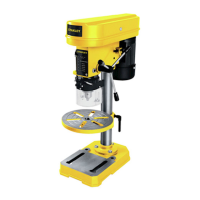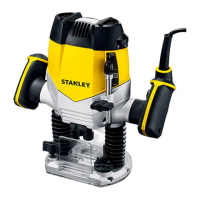12
More detailed description of the engine operation
and all related precautions and procedures can be
found in the Engine Manual packed separately with
the unit.
Starting Engine
1. Move the fuel valve lever to the ON
position.
2. To start a cold engine, move the choke to
the CLOSE position.
To restart a warm engine, leave the choke
lever in the OPEN position.
3. Move the throttle lever away from the
SLOW position, about 1/3 of the way
toward the FAST position.
4. Turn the engine switch to the ON position.
5. Operate the starter
Operating
Do not operate plate on concrete or on
extremely hard, dry, compacted surfaces.
The plate will jump rather than vibrate and
could damage both plate and engine.
1. After engine warms up, pull throttle lever
to accelerate engine speed. Plate will begin
vibrating and move forward.
2. The plate compactor is designed to
run at an engine speed (engine take off
shaft) of 3600 rpm (Normally considered
full throttle). Running the engine at
lower rpm’s will result in a decrease of
compaction force and lower travel speed.
It will create excessive “out-of-synch”
vibrations resulting in poor compaction,
maneuverability, excessive wear to the
machine, and discomfort to the operator.
3. In operation, guide the machine, but let GB
the compactor do the work. Bearing down
on the handle is unnecessary and causes
shock absorber wear.
4. On level surfaces the compactor moves forward
rapidly. On uneven surfaces or inclines, light
forward pressure on handle may be required to
assist the compactor in moving forward.
5. The number of passes required to reach
a desired compaction level will depend
on the type and moisture content of soil. Maximum
soil compaction has been reached when excessive
kickback is noticed.
When using a compactor on asphalt, Water
Sprinkler Kit is required to help prevent the bottom
plate from adhering to the hot asphalt surface.
When using plate on paving stones, attach a pad to
the bottom of the plate to prevent chipping or
grinding surface of the stones. A special urethane
pad designed for this purpose is available as an
optional accessory.
While a certain amount of moisture in the soil is
necessary, excessive moisture may cause soil
particles to stick together and prevent good
compaction. If soil is extremely wet, allow it to dry
somewhat before compacting.
If soil is so dry as to create dust clouds while
operating plate, some moisture should be added
to the ground material to improve compacting. This
will also reduce service to the air filter.
Stopping Engine
To stop the engine in an emergency, simply turn the
engine switch to the OFF position. Under normal
conditions, use the following procedure.
1. Move the throttle lever to the SLOW position.
2. Let engine idle for one or two minutes.
3. Turn the engine switch to the OFF position.
4. Turn the fuel valve lever to the OFF position.
Do not move choke control to
CLOSE to stop engine. Backfire or
engine damage may occur.
G
B

